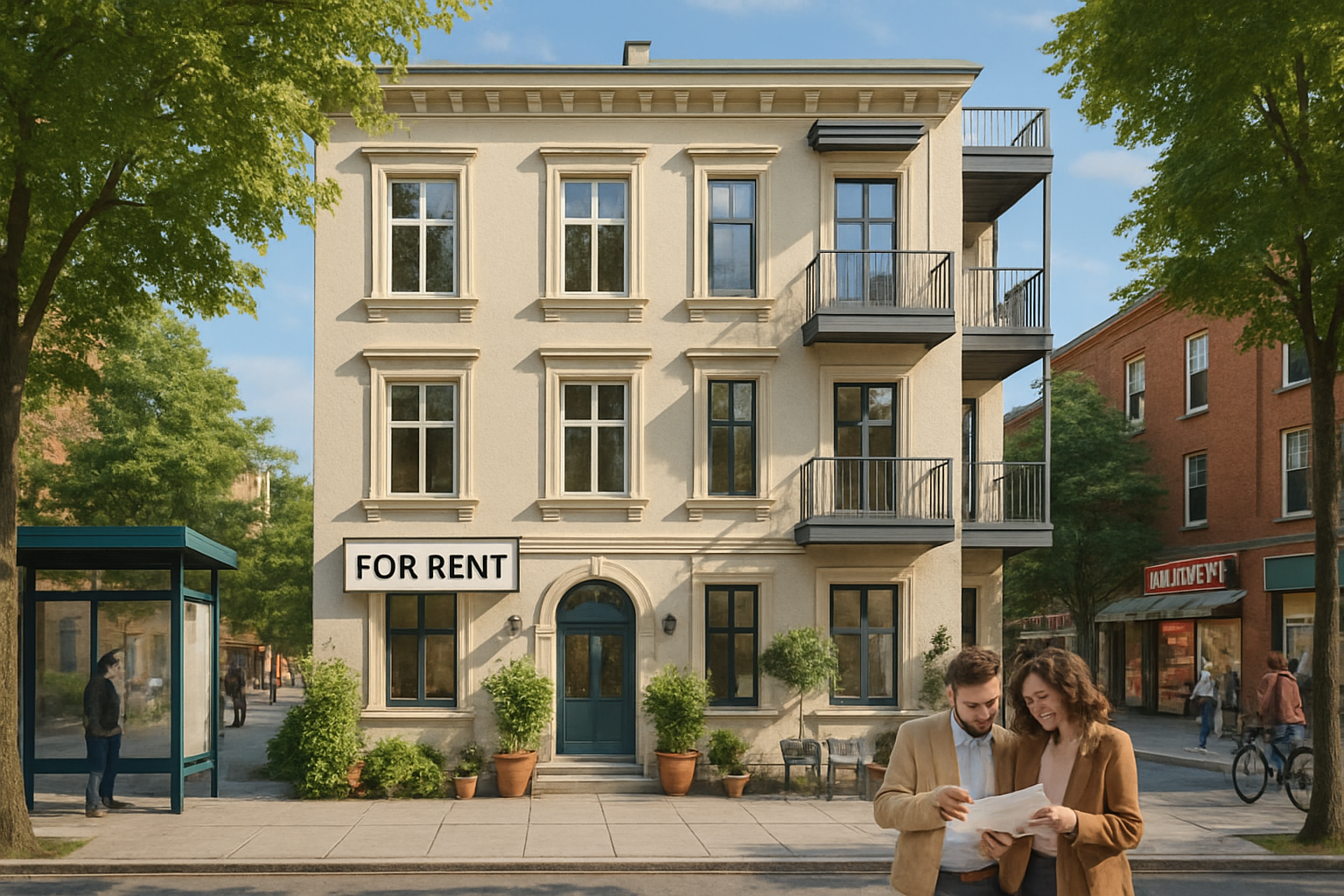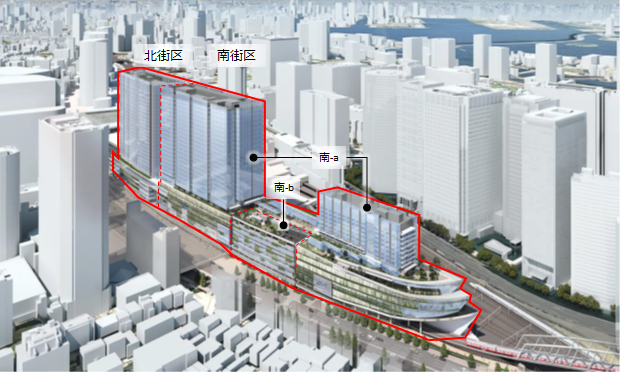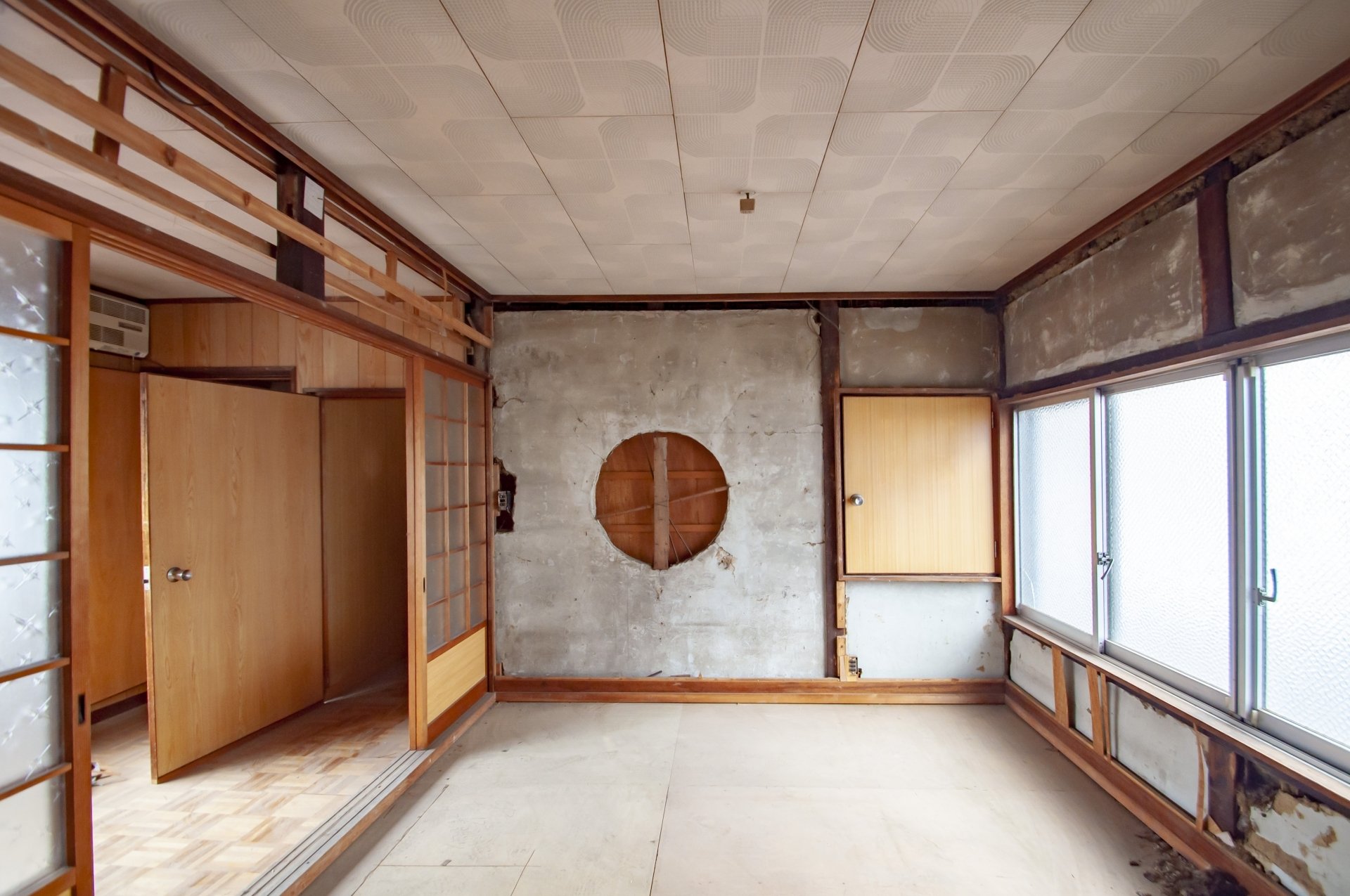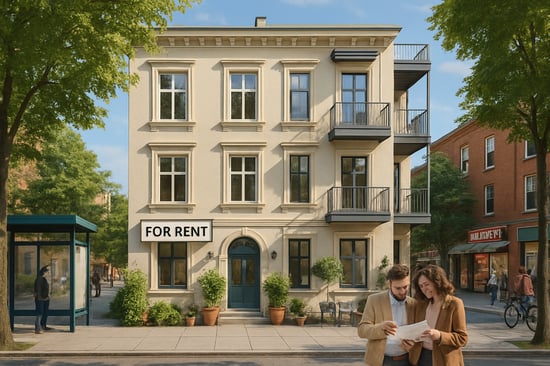Real estate investment is an attractive asset-building option for many people. However, unlike other financial instruments such as stocks and mutual funds, its results are deeply tied to the element of "time. The importance of growing one's assets with a long-term perspective, rather than being swayed by short-term market fluctuations, has never been more important.
In this article, INA&Associates, Inc. explains, from an expert's perspective, specific strategies and practical knowledge for building stable assets by making time your friend through real estate investment, especially "long-term holding. We hope this seminar will serve as a compass for securing a stable source of income for the future in today's uncertain economic outlook.
The Value of "Time" in Real Estate Investment: Income Gains and Capital Gains
There are two main types of income from real estate investment. There are " income gains," which can be earned continuously as rental income, and " capital gains," which can be earned by selling real estate.
Asset management techniques that make time their ally refer to a strategy that emphasizes income gains that continue to generate stable income over the long term, rather than chasing capital gains that depend on short-term price fluctuations. A proper understanding of the nature of these two types of gains is the first step to success.
Income Gains vs. Capital Gains
There are distinct differences between income gains and capital gains in terms of the nature of their returns, the duration of the investment, and where the risk lies. The following table compares the characteristics of each.
| Characteristics | Income Gain (rental income) | Capital gain (gain on sale) |
|---|---|---|
| Nature of Income | Continuous/Stable | Temporary and uncertain |
| Investment period | Long-term | Short to medium term |
| Main objectives | Asset building, cash flow generation | Earn trading margins |
| Risks | Vacancy, falling rents, rising interest rates | Market price fluctuations, low liquidity |
As the table shows, long-term holding for income gains is highly predictable and suitable for stable asset building. On the other hand, short-term trading for capital gains requires specialized market-reading knowledge and timing, and is therefore risky for beginners.
The powerful weapon of the "compound interest effect" that time fosters
The greatest appeal of the long-term holding strategy lies in the " compound interest effect," in which assets snowball in size by reinvesting the rental income earned. This is so powerful in asset building that Einstein called it "the greatest invention of mankind.
For example, if rental income from a property yielding 5% is steadily reinvested every year, the speed of asset growth is dramatically accelerated compared to simple interest management in which profits are not reinvested.
The simulation below shows the difference in asset growth between simple interest and compound interest when the principal amount of 10 million yen is invested at 5% annual interest.
| Number of years elapsed | Assets under simple interest | Assets with compound interest |
|---|---|---|
| After 10 years | 15 million yen | Approx. 16.29 million yen |
| After 20 years | 20 million yen | Approx. 26.53 million yen |
| After 30 years | 25 million yen | Approx. 43.22 million yen |
After 30 years, the difference between simple interest and compound interest is approximately 18 million yen. This difference is the value that "time" brings, and is the fundamental reason why long-term investment is recommended. In real estate investment, this compounding effect can be maximized by using the cash flow from rental income minus expenses for early repayment or for a down payment on the next property.
Three specific benefits of long-term holding
In addition to the compounding effect, a long-term holding strategy that makes time your friend has many other benefits for investors. Here we will discuss three of the most important benefits in detail.
1. building a stable income base that is less susceptible to economic fluctuations
Income gains from long-term holdings are not subject to violent fluctuations like daily stock prices. By selecting appropriate properties and conducting sound management and operation, it is possible to build a stable cash flow that is relatively unaffected by economic fluctuations.
In particular, since the income is related to "housing," which is indispensable for daily life, demand is characterized by being firm even during recessionary periods. By combining proper property management with a rental management strategy tailored to market conditions, vacancy risk can be minimized and continuous income can be secured. This also leads to mental stability and allows for steady asset building. 2.
2. clear advantage in terms of tax benefits
The tax rate on gains from the sale of real estate (transfer income) differs greatly depending on the period of ownership of the property. This taxation system clearly favors long-term ownership and is a factor that should never be ignored when formulating an investment strategy.
Specifically, the tax rate varies significantly depending on whether the property is owned for more than five years or not. Please see the table below to see the differences.
| Ownership Period | Classification | Income Tax | Inhabitant tax | Special Reconstruction Income Tax | Total tax rate |
|---|---|---|---|---|---|
| Less than 5 years | Short-term transfer income | 30 | 9% (for the first 9 years) | 0.63% (0.63%) | 39.63% Over 5 years |
| Over 5 years | Long-term transfer income | 15% (15%) | 5% (over 5 years) | 0.315% (0.315%) | 20.315% (0.315%) |
The difference is about twice as large. Even if you make a profit on a short-term trade, about 40% of that profit is collected as taxes, whereas if you hold the shares for a long period of time, you can reduce the amount to about 20%. This has a tremendous impact on the profits that remain on hand.
(3) Ease of risk control without being distracted by short-term noise in the market
In the real estate market, as in other markets, short-term price fluctuations are inevitable. However, if you are planning to hold for the long term, you no longer need to worry about daily price fluctuations. What is important is not the short-term "price" but the long-term "value.
The major advantage of long-term ownership is that it allows you to take a long-term view and implement strategies to maintain and improve the property's asset value. For example, by carrying out planned repairs and renovations that meet the needs of the times (e.g., making the property barrier-free, improving the Internet environment, etc.), it is possible to maintain and improve rents and increase the competitiveness of the property.
Long-term asset building starting with "condominium unit investment" recommended for beginners
Having discussed the importance of long-term ownership up to this point, many of you may be wondering, "Then, where exactly do I start? There are various types of real estate investment, but for beginners in particular, we strongly recommend starting with investment in " condominium units. The reason for this is that it offers a good balance of risk and return and is a very good first step in asset building.
Why are "condominium units" the best choice for beginners now?
The reasons why we recommend investing in "condominium units" as the first step in real estate investment can be summarized in the following three clear advantages.
- Accessibility to start with a small amount of money: In most cases, investing in a single apartment or condominium requires tens to hundreds of millions of yen. In contrast, condominiums can be started with as little as a few million yen, depending on the property, and in many cases with as little as 10 million yen to 30 million yen. Financing from financial institutions is also easily available, and the fact that one can take the first step with minimal personal funds is a big attraction for beginners.
- Efficiency with less management hassle: Condominiums have a "management association" that maintains and manages the entire building. Therefore, the management association basically takes the lead in cleaning and repairing common areas such as entrances, corridors, and elevators. The owner only needs to concentrate on the management of his/her own private area (interior), which greatly reduces the time and effort required for management compared to managing a single building. This is an investment method that can be easily undertaken as a side business even by those who are busy with their day jobs.
- High liquidity and liquidity: During the process of asset building, there may come a time when you want to sell your assets for cash due to changes in your life stage. Condominiums, especially those in urban areas with high demand, are characterized by "high liquidity," which makes it relatively easy to find buyers and sell when you want to sell. This is a reassuring factor in preparing for any eventuality.
Professional checklist to avoid influencing your future by choosing the right property
It is no exaggeration to say that the success of condominium investment depends solely on "property selection. We evaluate properties from various perspectives based on the following checklist in order to identify quality properties that will provide stable income in the future.
| Checklist Items | Professional viewpoints to be checked |
|---|---|
| Location | How far is the property from the nearest station (ideally within a 10-minute walk), whether multiple train lines are available, and how long is the access time to major stations? The availability of convenient facilities such as supermarkets, convenience stores, hospitals, and parks. The future of the town is also an important factor in the decision, such as future redevelopment plans and whether or not a new station will be built. |
| Building age and management status | It is a prerequisite that the building meets the "new earthquake-proof standard," which was established in June 1981 or later. In addition to this, we will check the past repair history (especially the implementation status of large-scale repair work), the contents of the long-term repair plan, and the status of the repair reserve fund. Determining whether the management association is functioning and whether the condominium as a whole is being properly maintained and managed will affect future asset values. |
| Rental Demand | What kind of people live in the area (singles, students, families, etc.) and is the population on the rise? The presence or absence of universities or large business establishments provides a basis for stable rental demand. We will research the rent rates of similar properties in the surrounding area to analyze whether rents can be set appropriately and what the risk of future rent declines is. |
| Yield | It is dangerous to make judgments based solely on the "surface yield (annual rental income ÷ property price)" shown in advertisements. It is necessary to seriously judge profitability based on the "real yield," which is calculated by deducting operating expenses such as property taxes, management fees, and reserve funds for repairs. In addition, it is essential to simulate realistic cash flow, assuming vacancy periods and future rent declines. |
Summary: A wise first step to sow the seeds for the future
The essence of the strategy of "making time your friend" in real estate investment is to accumulate stable income gains from a long-term perspective without being distracted by short-term market noise, and to steadily grow assets through the compound interest effect. It is a solid and sustainable asset building technique that is distinctly different from speculative trading.
In particular, beginners in real estate investment can take the first step by investing in condominium units, which is relatively easy to control risks and can be started with a small amount of money, thereby gaining valuable experience and achievements while minimizing the possibility of failure.
Asset building is not something that can be accomplished overnight. It is similar to the process of steadily sowing and carefully nurturing seeds for the future. However, with the right knowledge as a compass and a reliable partner to chart a course, real estate can enrich your life and become a powerful foundation for your future.
INA&Associates, Inc. is committed to working with the goals and values of each individual client to provide the best real estate investment plan for the next 10 to 20 years. We invite you to visit our office and tell us about your future.
Frequently Asked Questions (Q&A)
- Q1: How much personal funds do I need?
- A1: Generally speaking, 10-20% of the property price is considered a good guideline, but this is only a guide. The amount of personal funds required will vary greatly depending on the lending conditions of the financial institution you use and your own attributes such as annual income, place of employment, and financial assets. In recent years, some financial institutions will finance 100% of the appraised value of the property. In addition, please note that other expenses such as registration fees, real estate acquisition tax, and brokerage fees (approximately 7% to 10% of the property price) must be paid separately in cash. We recommend that you consult with a specialist for a detailed financial plan.
- Q2: Are properties in rural areas eligible for investment?
- A2: Careful judgment is required. Not all local properties are unsuitable for investment. However, in areas where the population is declining or aging rapidly, rental demand may decrease in the future, increasing the risk of vacancy and falling rents. On the other hand, there are areas where stable population and rental demand can be expected in the future, such as prefectural capitals, regional core cities, or areas where certain industries are concentrated. What is important is to analyze not only macro statistics but also micro trends of the area (redevelopment plans, attraction of companies, development of transportation infrastructure, etc.) in detail to determine the future potential of the area.
- Q3. What exactly do I need to do to manage my property?
- A3. Although there is the option of "self-management," where the owner manages the property himself/herself, we strongly recommend outsourcing to a reliable rental management company. The management company will handle all the complicated tasks involved in rental management on your behalf, such as recruiting tenants (leasing), concluding lease contracts, collecting and remitting monthly rent, handling tenant complaints, and attending to tenants when they vacate and arranging for restoration work. Although a fee is charged, by entrusting the work to a specialist, the owner can focus on his/her core business with peace of mind.
- Q4. Is there a future for real estate investment in Japan, where the population continues to decline?
- A4. This is a very important question. It is true that the population of Japan as a whole is in a declining phase, and some people are concerned about the future of real estate investment. However, it is premature to assume that real estate values will decline equally in all areas. In fact, the concentration of population in central Tokyo continues, and the number of single-person households is expected to increase, especially in the Tokyo area. In the future, the "polarization" of real estate values by area is expected to increase even further. In other words, as long as one has a "selective eye" that strictly assesses the location and quality of properties, it is quite possible to achieve success in real estate investment even in a time of declining population.

Daisuke Inazawa
Representative Director of INA&Associates Inc. Based in Osaka, Tokyo, and Kanagawa, he is engaged in real estate sales, leasing, and management. He provides services based on his extensive experience in the real estate industry. Based on the philosophy that “human resources are a company's most important asset,” he places great importance on human resource development. He continues to take on the challenge of creating sustainable corporate value.

.png)













